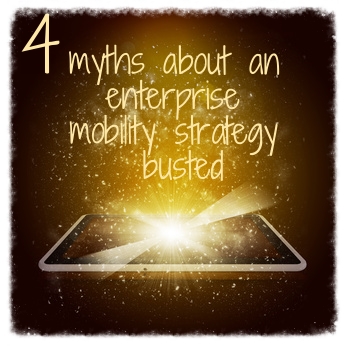Present Blog – IT Thought Leadership
Blog Present-IT thought leadership
Blog Present-IT thought leadership
IT thought leadership blog for CIOs and CTOs in Canada seeking resources to drive IT as a business contributor: hybrid cloud, infrastructure, managed services and security and IT recruitment.
 Mobility in general and the establishment of an enterprise mobility strategy are at the top of business concerns and trends right now. Mobile technology strongly attracts the attention of all users, from the consumer to the professional.
Mobility in general and the establishment of an enterprise mobility strategy are at the top of business concerns and trends right now. Mobile technology strongly attracts the attention of all users, from the consumer to the professional.
However, the vision of mobility is still restrictive in many companies in Canada, and the use of enterprise mobile solutions is still under-exploited.
An enterprise mobility strategy is as much the responsibility of the leaders in operations, marketing or sales, as it is CIOs.
There are myths anchored in the minds of many in regards to the effectiveness, the investment and what can be achieved with mobile solutions. It is important to demystify these issues to better understand how a mobile business strategy can accelerate growth and profits. This last point is also the theme of a webinar I am speaking at on May 26th.
# 1: Distributing tablets does not constitute a mobile strategy
I’ve often heard "Our strategy is to equip our people on the ground with tablets to increase their effectiveness." Or else they believe implementing BYOD, or Bring Your Own Device, is an effective mobile strategy.
The mobility strategy must be built with respect to business problems that the company needs to solve. These issues can be found at any level and in any department, and the strategy should target the following objectives:
- Transform the way people work
• Change the user experience, for both employees and customers
• Generate more profit
# 2: "Mobility does not apply to our field of business"
Currently, far few leaders are saying they need mobility to solve business problems and seize new opportunities.
No company in any industry can today claim that mobility is not applicable to them. This remark also applies to the size of the company: SMEs have no less a need for adopting a mobility strategy than large companies.
In fact, SMBs often get faster results with a mobility strategy because the changes can take root more quickly than in larger companies, where they are constrained by their size.
# 3: Developing mobile solutions is too expensive
Most enterprise mobility solutions do not require a large investment, because they do not require the implementation of an integrated management system.
One key to implementing mobility solutions in your business is to understand that mobile applications must address simple elements of more complex problems.
The cost of developing and implementing an enterprise mobile solution can start at a few thousand dollars. And unlike the utilisation of complex software, business mobile applications require little or no user training.
# 4: Business apps, like consumer ones, are simply gadgets
First of all, enterprise mobile applications are contextualized and will provide information relative to the desired goal.
Also, unlike consumer applications available on Google Play Store or App Store, enterprise applications are developed to share and store information securely. The concept of data protection is at the heart of the development of mobile applications for business.
Important
Whatever line of business you are in, whether operations, marketing, sales, it is important to understand how mobility can help you achieve your goals and how to avoid falling into certain traps when creating and implementing your mobility strategy.
To shed light on this topic and help you successfully bring mobility to your business, Present is offering a free webinar Tuesday, May 26th in collaboration with LinkedQuébec: Your Mobility Strategy - 5 ways in which an enterprise application can speed up growth and profitability (webinar in French).
About Blog
The right use of technology addresses business challenges and drives business growth in all areas of an enterprise. We hope this blog will offer insight into developing strategies and tactics to enable you to identify those key drivers of growth and keep pace with and anticipate the rapid technology change of today.
Posts by Topic
- IT infrastructure (116)
- IT security (92)
- IT Innovation (59)
- Trends (51)
- Cloud (47)
- Managed services (46)
- Mobility (38)
- Digital transformation (29)
- CIO/IT leaders (28)
- Events (28)
- News (23)
- Microsoft 365 (17)
- Security (17)
- IBM (16)
- Disaster recovery (DR) (14)
- High availability (12)
- Recruitment (12)
- Storage (12)
- Big Data (11)
- Collaboration (11)
- AI (9)
- Case study (9)
- Office 365 (9)
- BYOD (8)
- Customer Experience (8)
- Hybrid Cloud (7)
- Current events (6)
- SAP Hana (5)
- Business intelligence (BI) (4)
- Converged infrastructure (4)
- Convergence / Hyper-convergence (4)
- Virtualization (4)
- Copilot (3)
- Future of retail (2)
- Retail (2)
- trend (2)
- Backups (1)
- Beacon (1)
- Blog Migrations (1)
- Contests (1)
- Infrastructure TI (1)
- Innovation TI (1)
- IoT (1)
- MDM (1)
- Stockage (1)
- Virtualisation (1)
- blockchain (1)
- cio (1)
- replication (1)
- Étude de cas (1)


